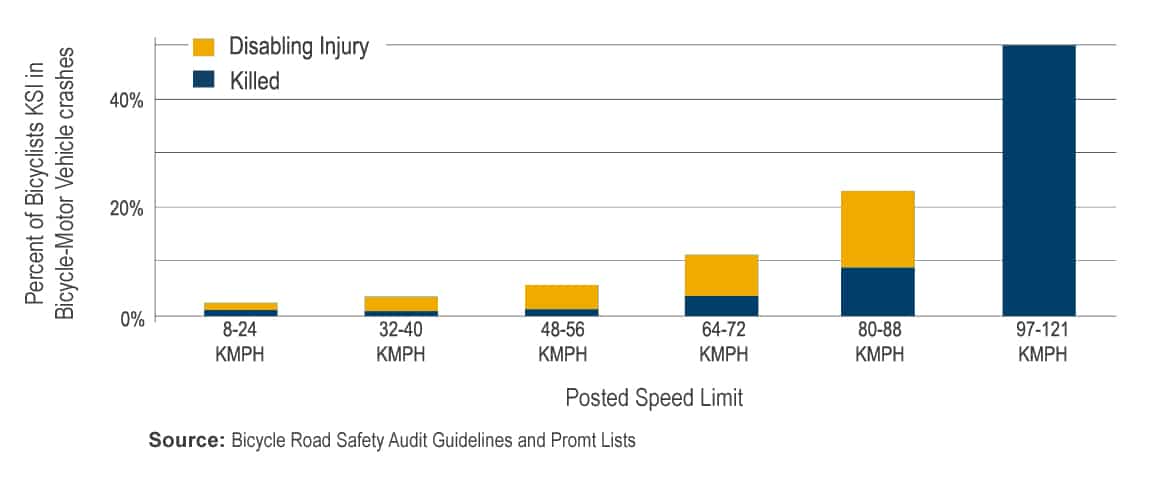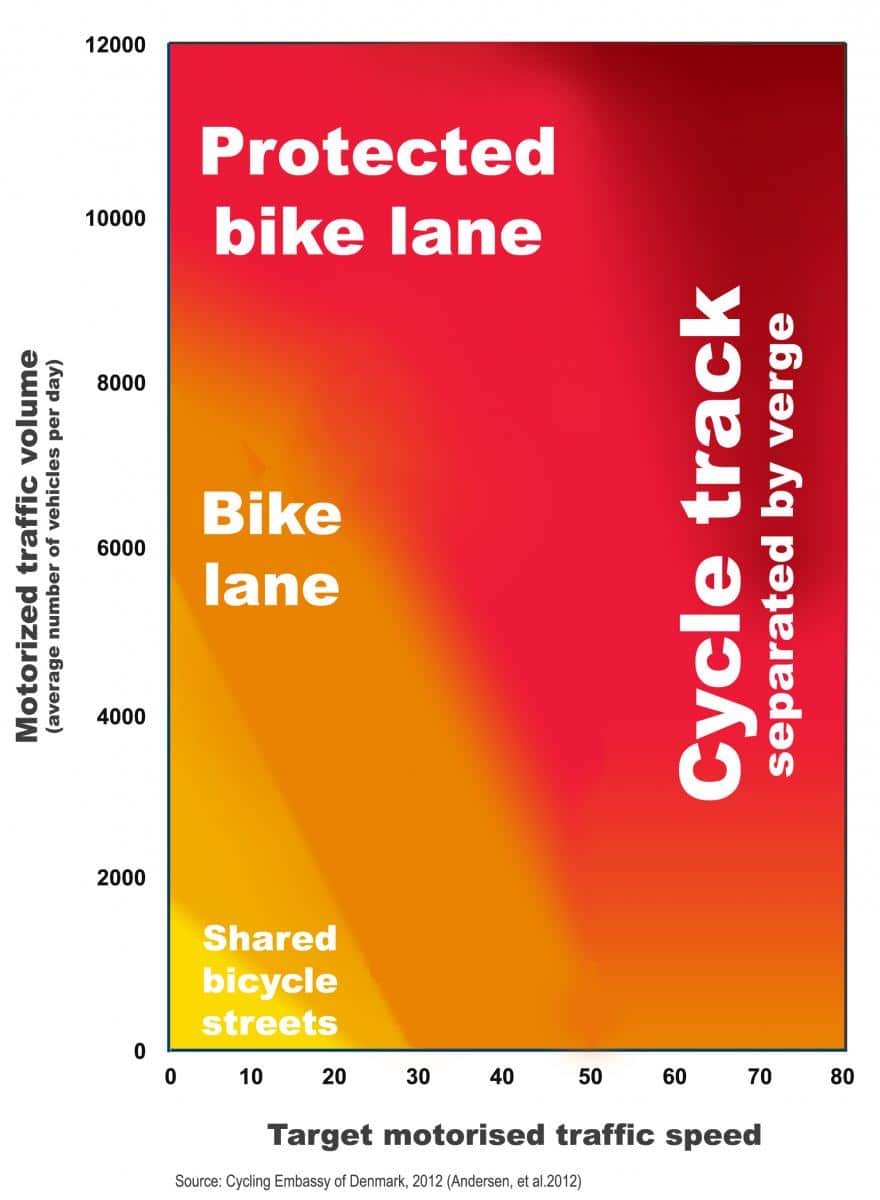The cities with the best road safety records in the world design their streets for pedestrians, cyclists, and mass transport to reduce risk of crashes. This can be done by encouraging safer vehicle speeds and prioritizing pedestrian and cyclist safety.
Reducing Risk: Traditional engineering has focused on reducing crash frequency per VKT (vehicle kilometers traveled). This can lead to a bias toward treatments that improve the safety of car occupants, neglecting those who choose to travel by other modes. Instead, cities can diminish risk by treating all modes fairly, encouraging safer vehicle speeds, and focusing on locations that are especially prone to produce fatalities or serious injuries.
Safer Infrastructure and Design: This includes the number of safety engineering treatments per section of street network, characteristics of community design that reduce speed or offer good conditions for walking, cycling and mass transport facilities and volume, and average vehicle speeds by road type.


References
Figure 1 based on data in The University of North Carolina Highway Safety Research Center. North Carolina Bicycle Crash Facts 2004 – 2008. August 2010.
Figure 2: Cycling Embassy of Denmark, 2012 (Andersen, et al. 2012)
Cities Safer by Design